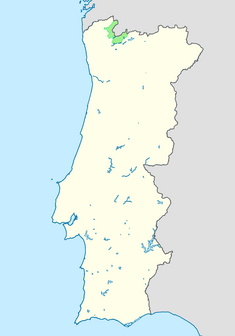Gerês - National Park Peneda Gerês
One can’t talk about walking in Portugal without talking about the National Park Peneda Gerês, or just Gerês as we usually refer to it here.
We have quite a good number of protected areas in Portugal but we only have one national park and that is Gerês.
Gerês is located up north and its northern boundaries are part of the frontier between Portugal and Spain, please check the little map inserted in this post - is an image from Wikipedia.

The Park was established in 1971 and occupies an area of 70 000 hectares (172 974 acres) which is around 1% of the Portugal's territory … that can give you an idea of how important is the National Park for us.
I’ll not go through all the data concerning the Park, for that you can access to Wikipedia (click here) and you will find a lot of common knowledge. I rather prefer tell you what can you expect by going there and some of my own thoughts about it.
Gerês is very much linked with the Portuguese concept of outdoors, into the wild, Nature and green landscapes with huge rounded granite stones.
I remember when I started with my tour leading professional activities, everybody was asking me if I was taking my guests to Gerês, they was not asking any other places, just about Gerês.
Like Portugal in general, Gerês is a quite diverse area. During the summer, if you go walking there, you will find beautiful waterfalls and lovely green small hills but you can also find warm, dry, hard landscapes and that is part of its beauty.
Personally I prefer to go there during spring or fall, especially fall with the brown, red and yellow colors, very nostalgic. Spring is a cheerful season with light green tonalities and small flowers everywhere ... quite lovely.
A distinctive feeling of Gerês is an atmosphere of mysticism … witches, spelling, uuuuuuu, scary ehehehe. In fact there is an yearly fair of the occult in a small village called Vilar de Perdizes close to the Park.
A few years ago some wolfs returned to the Park and all the country was quite proud, it was breaking news in all TV channels. Don’t be afraid because you won’t see them, they suffered too much and for too long with mankind so they are quite well hidden in the woods way from everybody.
In Gerês there are a lot of animals you may easily find by walking there, small animals I mean, also quite a number you will only find in posters, unless if you are an expert hiker.
Walking in Gerês you will find garrano horses (http://en.wikipedia.org/wiki/Garrano ) and the barrosã cow, both local breeds. Boars are also quite common, however also very difficult to see because they are hunted.
Another local breed, but quite often not considered in tourist information, is the Castro Laboreiro dog. This dog breed has a quite rough look, is a hard working cattle dog and has an interesting characteristic, instead of licking the water to drink it like any other dog, he sips the water as wolves do.
For those who loves flora this is the place to see impressive woods of English oak (Quercus pyrenaica) and plenty of lily’s that grow everywhere. You can find here an herb called “Hipericão-do-gerês” (tutsan - Hypericum androsaemum L.) from which you can make a nice infusion, the flavor and smell I remember from when I was a kid in my grand-mothers place.
Some other animals can be found in the Park like golden eagles, roe-deers and many others but more difficult to find.
There many ways of accessing to the Park, personally I prefer two of them:
- Campo do Gerês (clic here to see where it is)
- Mezio (clic here to see where it is)
The entrance via Campo do Gerês gives the visitor a direct door to Nature. From here you will access an unpaved road where you will find the river Homem (means man) and many waterfalls and places to take a swim – the water is quite cold.
Going through Mezio you will access Soajo, a small village where you can see a national monument called Espigueiros.
At Soajo you will find 24 espigueiros close to each other, some of them are dated from late XVIII century AD, when the corn was brought to Portugal from the New World.
This post is getting too long and there are so much to say about Gerês that later I will have to write a few posts more about Gerês.
To be continued …
David Monteiro







0 comments